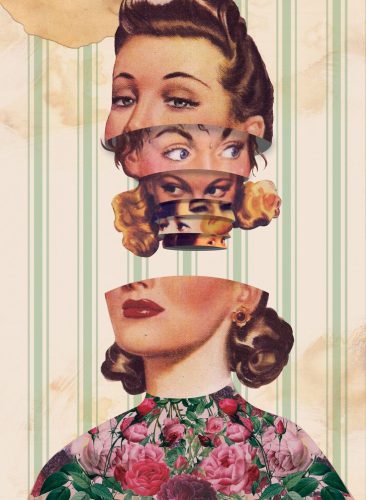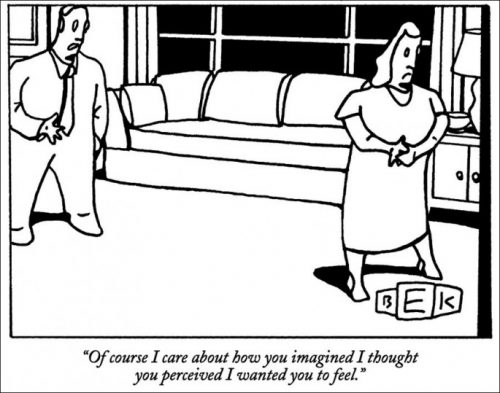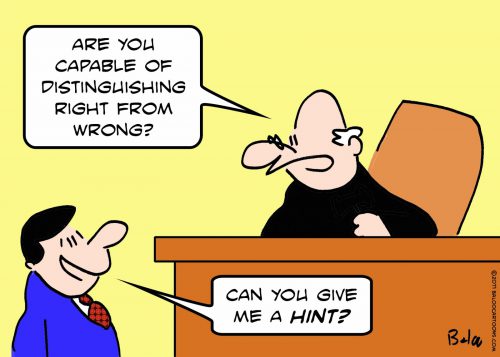 You may have heard about this week’s fierce Supreme Court deliberations about jury secrecy and racial bias. I don’t want to talk about that, exactly, but instead about where that debate inevitably takes us…back to questions of what bias is, how to identify it impartially, and how to temper it without compromising our perceived freedom.
You may have heard about this week’s fierce Supreme Court deliberations about jury secrecy and racial bias. I don’t want to talk about that, exactly, but instead about where that debate inevitably takes us…back to questions of what bias is, how to identify it impartially, and how to temper it without compromising our perceived freedom.
According to The NY Times, “Justice Alito said that rooting out racial bias during jury deliberations could pose difficulties in an era when some are quick to take offense.” He was referencing college campuses, which have developed a reputation for being places where even the slightest slippage of language could become a wellspring of condemnation. Alito’s remarks reminded me of an article in The Economist from earlier this summer, about campus protests and how we tend to deal with social biases:
One ominous turn lies in the claim made by some protesters for the supremacy of their subjective judgments. Ms Baker [a student head at Yale’s chapter of the NAACP] argues that black people know best when they are being racially demeaned in the same way that women can best distinguish between a compliment and harassment. That may often be true. White, middle-aged deans would be rash to secondguess the experiences of black youngsters.
The powerful riposte is that, to function, society relies on impartial adjudication of wrongs, especially in an era of multiculturalism, with its attendant frictions. Prejudice may indeed abound, but for officials to intervene it must be proven, not merely alleged. In any case, the idea that any group’s experience is inaccessible to others is not just pessimistic but anti-intellectual: history, anthropology, literature and many other fields of inquiry are premised on the faith that different sorts of people can, in fact, understand each other.
It’s hard to reference one movie about differences that isn’t also about overcoming those differences. Academically, you couldn’t begin to study history or anthropology without presuming that different kinds of people could understand one another, at least at some basic level.
Of course, we all have our inherent, deeply entrenched social biases which are difficult, if not impossible, to shake (or even identify). But among the biases we can identify—e.g. political biases—the walls between us remain thick. As Jonathan Haidt wrote last year in his oft-referenced piece, The Coddling of the American Mind, “implicit or unconscious biases are now at least as strong across political parties as they are across races.” (According to this claim, my wife and I are basically an interracial couple–I say that somewhat tongue-in-cheek–but it’s not without its challenges. The political biases that brought us into adulthood influence every decision beginning with what grocery store to shop at and what radio station to listen to on the way there.)
If everything is influenced by these unshakable, often hidden biases that even the Supreme Court can’t quite wrap its nine heads around–and if everything that builds us ultimately separate us from someone else—is there anything left untouched by our biases? Is there anything that unequivocally brings us together? In The Irrational Season, Madeleine L’Engle asks, “Is there anything in this life on which we can really and truly count?”
The answer is certainly not ‘common sense,’ or rationality. Human perception has time and again failed us–and we fail to understand each other because of it. Even God has made himself known to us–“his eternal power and divine nature, invisible though they are, have been understood and seen through the things he has made” (Rm 1.20)–but we take that knowledge and corrupt it or misuse it or ignore it for our own purposes. We are, in a similar way, incapable of perceiving each other in such a way that unifies us and rescues us—this is where the wheels of optimistic rationalists get stuck in the mud. That’s not to mention mental health disabilities and certain physical/perceptive incapabilities.
I thought, next, that maybe love was the thing that we all have in common, the thing that cuts through biases and unites us as people. But really not even love is that reliable—it’s powerful, of course; it’s just not concrete, not something we can understand. Love gets mixed up, once again, on that conveyor belt of perception. We might feel it in a moment, or choose it in another, but it’s not something for which everyone can agree on a definition. Mirror in the sky, what is love?
L’Engle, though, knows that there is something we can count on–there is an unbiased component of human experience:
“Is there anything in this life on which we can really and truly count?…Even the most dependable is flawed and fallible…We all betray each other. No human being is totally faithful….The only thing we can count on completely is death” (The Irrational Season, 206).
Death: we know it when we see it, and it’s the thing that we are all headed towards no matter who we are. Death is black-and-white, concrete and recognizable. And it’s in death that the crucified God reaches out, not metaphorically but actually, in the event of the cross. As Cyril of Jerusalem describes the universal impact of the cross, first quoting Isaiah:
“‘I stretched out my hands all day to the unbelieving and contradictory people’ (Is 65.2). He stretched out his hands on the cross to encompass the ends of the world. For the central point of the earth is Golgotha here” (157).
The place of the skull is the place in which Christ makes clear what he was hinting at all along, universality. In his ministry he included children in the grown-up conversations, healed half-blood Samaritans, ate dinner with the unclean. He cut across demographics, was interested in everyone, of all perspectives and stories and mental health states. At the cross he demonstrated this with finality. Jesus opens his arms to everyone. In The Crucified God, Moltmann points to the crucifix and says, “This is God and God is like this.”
The cross, as Moltmann says, allows us to see our “de-divinized” selves: the biased, anxious, disjointed people we really are. “There is no need for any attempts at justification or for any self-destructive self-accusations to draw near to him. The godforsaken and rejected man can accept himself where he comes to know the crucified God who is with him and has already accepted him.” Even with his biases. Even with his absurd bumper stickers.
https://www.youtube.com/watch?v=SfGJWb9OPug

COMMENTS
3 responses to “Hidden Biases and Open Arms”
Leave a Reply















woah, good stuff ceej. Beatles were wrong. #allyouneedisdeath #it’s(not)easy